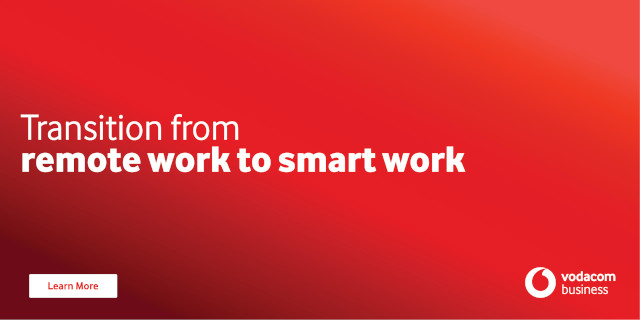Business News sponsored by Vodacom Transformation of Work:
By President Ntuli, Managing Director for HPE South Africa
Imagine you’ve spent the past few years dining regularly at restaurants. The management of your household budget will probably have been a challenge without the ability to predict or control your monthly food expenses. It’s likely that if you suddenly feel the need to tighten up on costs, you’ll rather opt to dine at home, where you have the option to buy your groceries in bulk and better control spending.
In much the same way, a shift back to the private cloud is helping CIOs better manage their budgets by avoiding unforeseeable costs. In fact, research shows that moving the right workloads to the private cloud delivers median cost savings of 50%.
And with South Africa’s economic growth expectations for 2024 sitting at just 1%, it’s safe to say cloud repatriation will be a definitive trend in the year ahead. Local CIOs will no doubt be under strict instruction from their board of directors to keep IT costs predictable and as a result will be looking for greater control over their spend.
But just as many businesses have felt the consequences of too quickly migrating to the public cloud without a well-defined strategy in place, similarly there is a danger for CIOs in getting caught up in the growing trend towards cloud repatriation without first developing a robust cloud migration plan. Aside from having a clear understanding of business needs and how they impact which workloads should stay in the cloud, and which should be repatriated, CIOs also need to ensure minimal disruption to the business while the transition is taking place.
For example, if the business is shifting from the cloud back to its own data centre, has the CIO considered the new energy requirements? The need for a backup generator might seem obvious given the country’s current energy crisis, but such requirements can be overlooked when previously catered for by a cloud provider.
Networking is key to service reliability
Where local business leaders are looking to cloud repatriation to help control costs, there are important considerations to keep in mind, like latency and connectivity requirements. One example are applications that can be affected by the congestion on a public cloud. A shift back on premises can enable 65% higher workload performance by providing dedicated resources that reduce latency and ensure a high level of service reliability.
To reap the rewards of this shift, however, it’s necessary to ensure the right infrastructure is in place. This is particularly important when it comes to network requirements.
In the past, I’ve seen some organisations shift workloads between clouds without realising the importance of considering their network infrastructure. When transferring to a hosted data centre, for example, underestimating the need for network technology that delivers high speed internet can impact future projects, resulting in major delays.
When app availability is compromised, your business is at risk of losing clients. Think, for example, of the upset caused when banking systems are down – even briefly – and customers are unable to make payments.
Understanding the need for a different network architecture
The reality is that as you repatriate your workloads, your networking may need some restructuring. Particular attention must be paid to peak periods, when the network will be under the most strain and when there is likely to be the largest number of concurrent users. Rigorous stress testing will be needed to ensure optimal performance. At the same time, the network configurations for public cloud and on premises will differ. This means you’ll need to update them in line with the new architecture as part of the repatriation process.
The business’ individual connectivity requirements must be considered as part of a broader cloud migration plan, which can vary significantly. To further complicate matters, there are many different service providers in the market, all advocating their offerings as end-to-end solutions.
For this reason, the first step in successful repatriation is to seek out independent advice. HPE, for example, does this through an approach called Right Mix Advisor, whereby different tools and methodologies are used to help businesses find the optimal mix of cloud solutions as part of a broader hybrid approach.
The need for cloud repatriation is always a strategic decision rather than a technical one. It’s imperative that the planning and execution isn’t driven by IT teams exclusively, but in consultation with other business stakeholders.
The best way to achieve optimal results is by placing careful thought around the ‘why’ behind your choice to shift workloads. In the end, your decision-making should come down to optimising and streamlining resources. Using these business benefits as a guiding compass, you can build a successful cloud strategy that accounts, not just for your networking needs, but for everything from cost optimisation to compliance requirements.
Making the most of your IT budget involves a strategic combination of ‘staying in’ and ‘eating out’. While jumping on the cloud repatriation movement can provide a great way to save money and improve your service delivery, it must be undertaken with a clear understanding of where your business is headed and how the cloud can help it get there.

.jpg)




